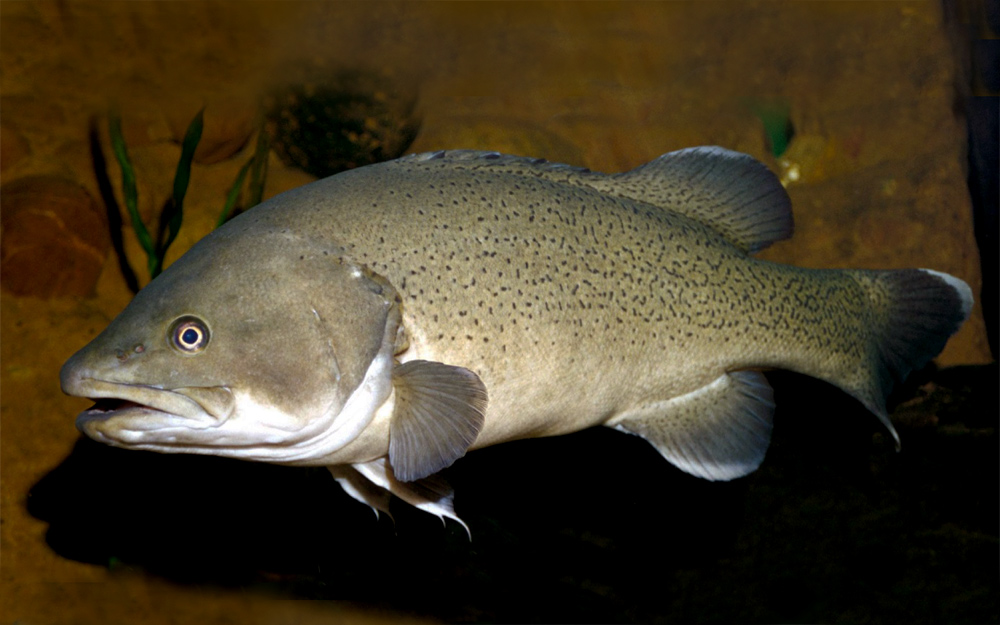Trout cod
(Maccullochella macquariensis)

Classification
General data
Trout Cod are a large, predatory freshwater fish belonging to the family Percichthyidae. Trout Cod were once widespread throughout the southern tributaries of the Murray-Darling river system, but the species has undergone a dramatic decline in distribution and abundance over the past century. Natural Trout Cod populations are now limited to a single self-sustaining population in the Murray River between the Yarrawonga Weir and Barmah. Several populations have also been re-established in Victoria and NSW by stocking of captive-bred fingerlings or through translocation.
Trout Cod are listed as an endangered species under both NSW and Commonwealth law. There are heavy penalties for harming, buying, selling or possessing them, or for harming their habitat
Trout Cod can grow to 85 cm in length and 16 kg in weight, but more commonly occur up to 50 cm and 1.5 kg. They are mostly olive in color but can range from blue-grey to dark brown on the back with a speckled pattern of dark grey to black spots. The underside is generally paler in color ranging from grey to white.
Despite being formally described in 1829, it was not until 1972 that Trout Cod was recognized as a species distinct from the similar-looking Murray Cod.
A prominent feature often used to identify Trout Cod is a dark horizontal eye stripe on the side of the head. However this should not be used as the only identification feature, as juvenile Murray Cod can also possess a similar stripe and the stripe can often be absent, broken, or indistinct on Trout Cod. A combination of features should be used to distinguish Trout Cod from Murray Cod. Distinguishing features of the Trout Cod include an overhanging upper jaw, a longer and more pointed snout, a straight head profile and relatively large eyes.
Habitat and ecology
• Trout Cod tend to occupy areas that have lots of large in-stream woody debris or snags, which provide complex habitats for each stage of the species life cycle.
• They tend to remain at the one site with limited home ranges.
• Trout Cod are carnivores, preying mainly on crustaceans and aquatic insects but also on other fishes.
• Maximum life span is thought to be 20 - 25 years, with sexual maturity reached at 3 - 5 years, when approximately 35 cm (males) or 43 cm (females) in length, and 0.75 - 1.5 kg in weight.
• They form pairs and spawn during spring and early summer when the water temperature is around 15ºC.
• Females produce 1,200 – 11,000 adhesive eggs (2.5 – 3.6 mm in diameter) that attach to hard substrates and are guarded by the male.
• Larvae hatch after 5 - 10 days when they are approximately 6 - 9 mm in length, and then disperse by drifting in the water column.











